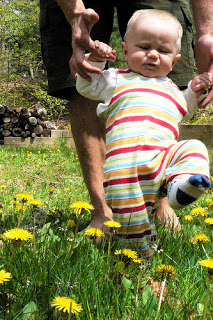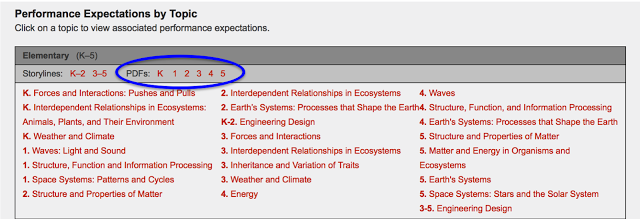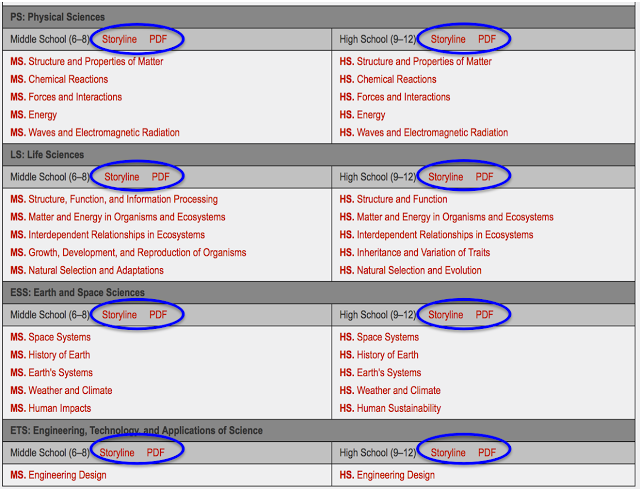If you’ll be rolling out NGSS this year, you might be unsure where to begin. Below are 7 steps to get you started.
1) Gut Check
You have been told you will be implementing the Next-Generation Science Standards (NGSS), and you have seen a few examples of these standards. The changes from your previous science curriculum could be significant. It’s possible you might find the depth of some performance expectations/standards daunting.
I love teaching science, and there still were a couple of times I caught panic rising in the back of my throat and that nasty thought, “Hmm … I’m not sure I could complete that performance standard myself …”
It’s important to acknowledge – at least to yourself – which standards give you pause, if any. A common defense mechanism is to sweep it under the carpet and ignore it. Don’t give in to that temptation!
Make a note of these areas and jot down some ideas to address them. I usually start with internet research*. If that’s not enough, I generate a list of people I might know who could a) teach me or b) class swap with me so we each cover an area of strength with the other’s classes.
Another option could be available at your district level. Due to supply & demand for district resources, I usually start closer to home and work outward: myself, friends, school colleagues, and then district support.
*You Tube videos can be a Godsend in illustrating difficult or new concepts.
2) Understand how to read the standards.
3) Get the full list of your standards by grade.
If you are an elementary teacher, it will look like this:
For middle and high schools:
There is also a search option:
4) Get the Big Picture
For elementary, read through your standards and those at the surrounding grade levels.
For middle and high school, someone in your district is likely to have sorted through and assigned standards by grade level. If they have not, you will want to schedule a meeting with the science department teachers ASAP to create your own standards plan by grade level. NGSS has laid out a Model Course Mapping for middle and high school, which serves as a nice jumping off point.
5) Year-long Map
Map out your standards and performance expectations for the year so you can decide how much time to devote to each. If you teach all academic subjects, note where there are cross-curricular opportunities. If not, try to set up interdisciplinary meetings to find areas of collaboration with your colleagues.
The shift from state standards to NGSS likely means fewer standards to explore, with an expectation to explore each more deeply. One you adjust your timing to account for this shift, you have a good framework to build your plans in greater depth.
6) Plan & Gather Resources
It is quite likely you will find yourself short on resources with the implementation of NGSS. Your science texts might not align well given the changes. Embrace this freedom!
At least for your first unit of study, begin pulling resources. Keep the mantra in mind “Doing science.” It’s not that we don’t want students to read about science, but we want to keep the balance shifted in favor of doing. Hands-on and collaborative activities focusing on higher-level thinking and scientific reasoning should be your focus! A few of my own resources are shown and linked below.
 |
| Metaphorical Cells Freebie Analyze & Interpret Data Unit STEM Challenge: Boat Building Photosynthesis Hands-On Modeling Characteristics of Living Things |
7) Baby Steps & Kindness
 |
| It might be a struggle at first, but you’ll be walking and running before you know it! |
When we attempt too many changes at once, we are less likely to be successful. Implementing a new set of standards, incorporating engineering standards/practices, setting up cross-disciplinary collaboration, gathering new resources, and providing more opportunities to “do” science (perhaps in a less than ideal classroom space) are just a few of the potential changes you are facing.
It is unlikely in the first year you will be completely satisfied with your performance in all areas. And keep in mind, it will be quite a shift for students as well! Prioritize a few areas on which to focus, and add more as you gain facility and comfort. Be kind to yourself – just not too kind! As you always do, focus on what works for your kids, but continue to challenge yourself to grow and improve!
And may the odds be ever in your favor!
Related Posts:
photo credit: <a href=”http://www.flickr.com/photos/8187382@N05/2353524782″>scared.</a> via <a href=”http://photopin.com”>photopin</a> <a href=”https://creativecommons.org/licenses/by-nd/2.0/”>(license)</a>
photo credit: <a href=”http://www.flickr.com/photos/18773952@N00/502152406″>struggling to walk</a> via <a href=”http://photopin.com”>photopin</a> <a href=”https://creativecommons.org/licenses/by-sa/2.0/”>(license)</a>






